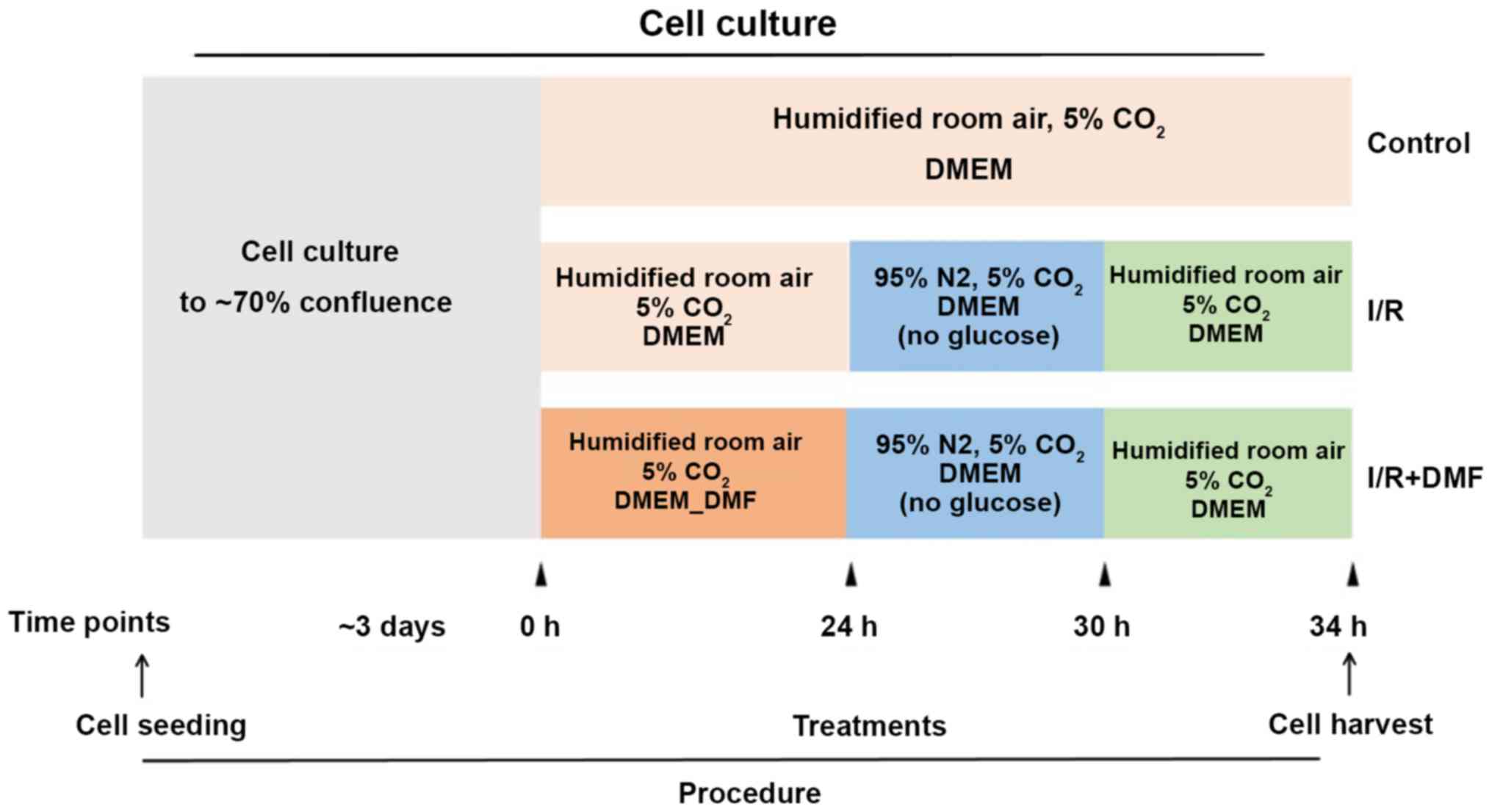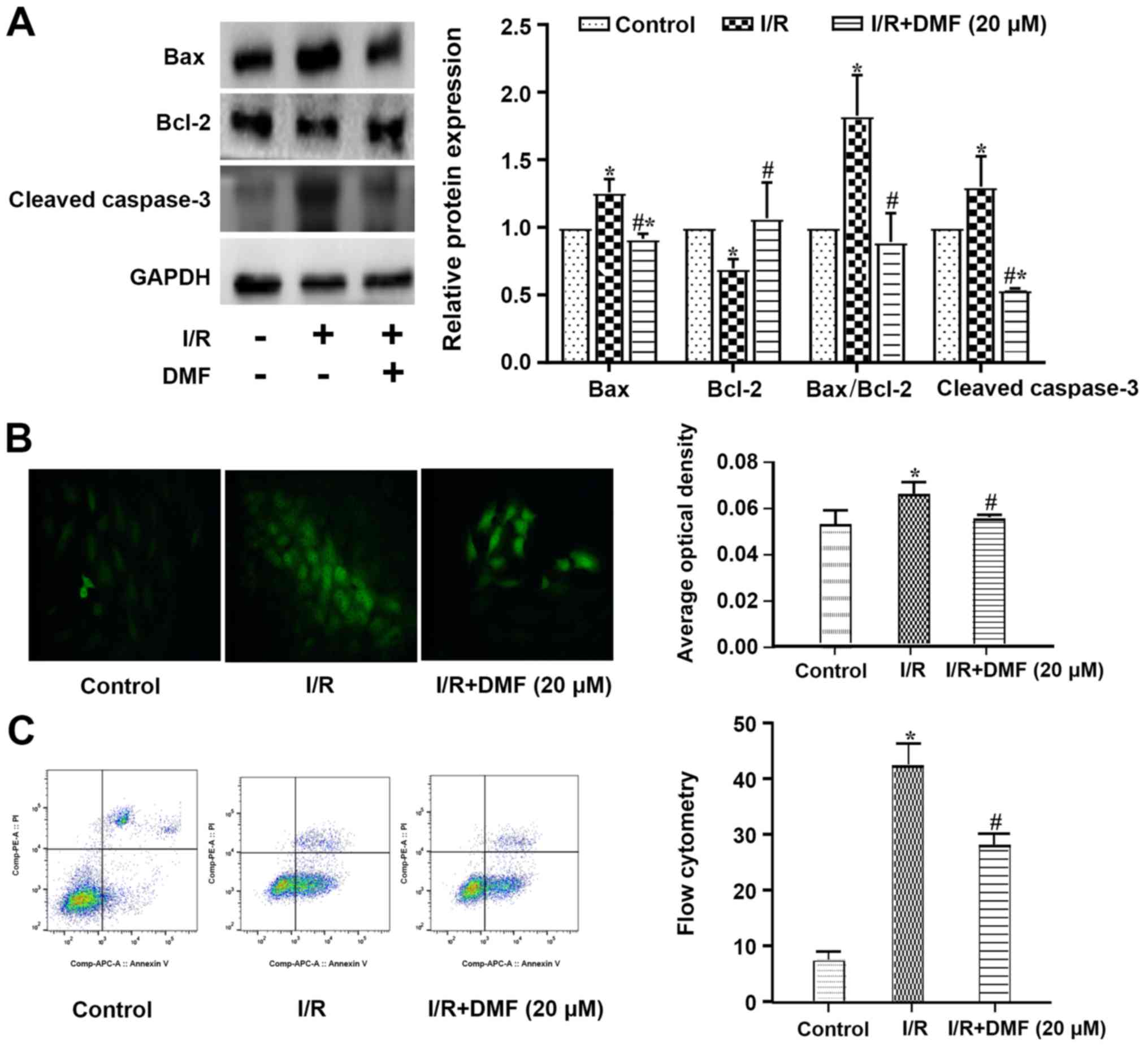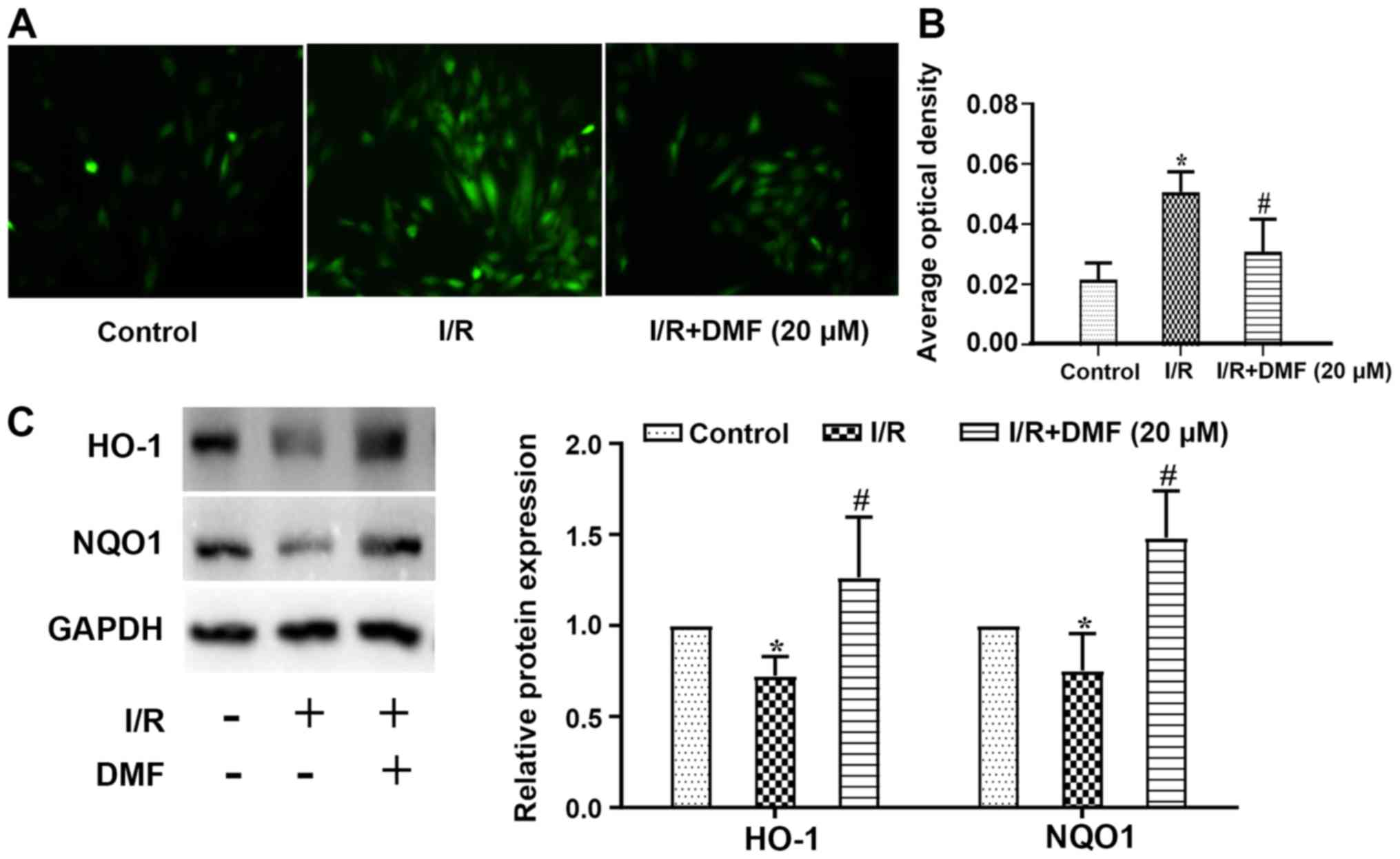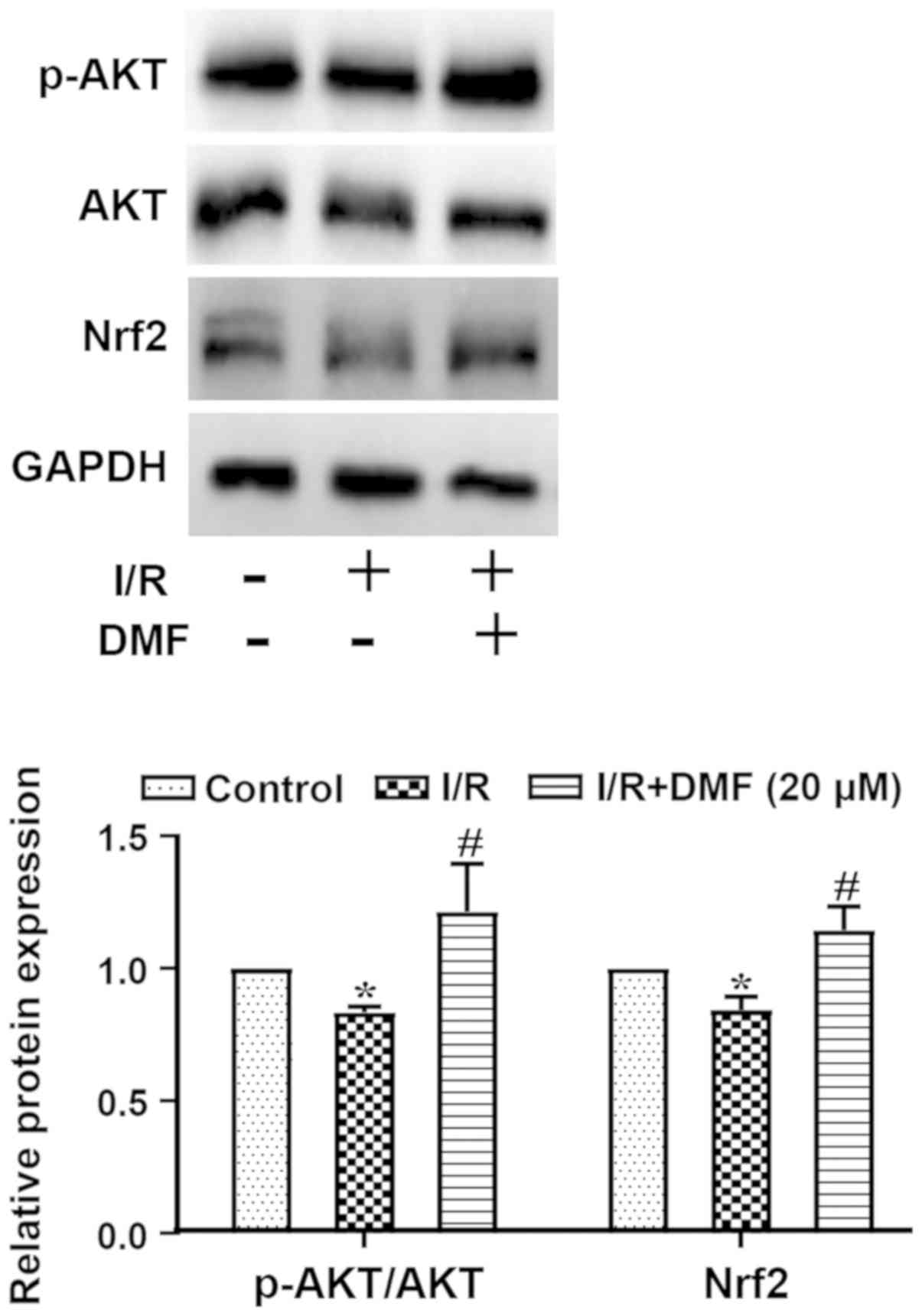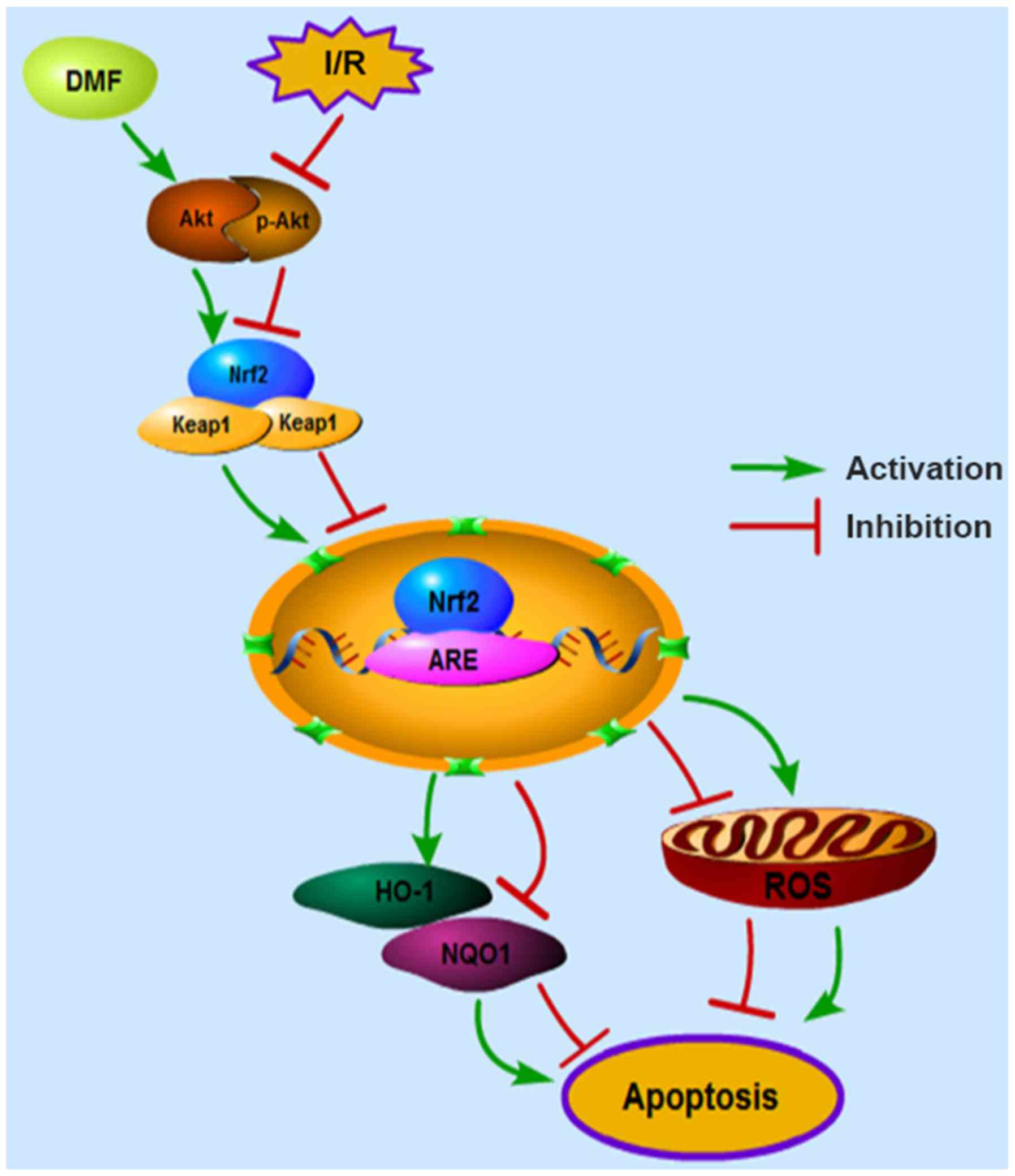|
1
|
Yoon J, Seo H, Oh IH and Yoon SJ: The
non-communicable disease burden in Korea: Findings from the 2012
Korean burden of disease study. J Korean Med Sci. 31 (Suppl
2):2783–S167. 2016. View Article : Google Scholar
|
|
2
|
Yetgin T, Manintveld OC, Boersma E,
Kappetein AP, van Geuns RJ, Zijlstra F, Duncker DJ and van der
Giessen WJ: Remote ischemic conditioning in percutaneous coronary
intervention and coronary artery bypass grafting. Circ J.
76:2392–2404. 2012. View Article : Google Scholar : PubMed/NCBI
|
|
3
|
Bompotis GC, Deftereos S, Angelidis C,
Choidis E, Panagopoulou V, Kaoukis A, Vassilikos VP, Cleman MW and
Giannopoulos G: Altered calcium handling in reperfusion injury. Med
Chem. 12:114–130. 2016. View Article : Google Scholar : PubMed/NCBI
|
|
4
|
Ibáñez B, Heusch G, Ovize M and Van de
Werf F: Evolving therapies for myocardial ischemia/reperfusion
injury. J Am Coll Cardiol. 65:1454–1471. 2015. View Article : Google Scholar : PubMed/NCBI
|
|
5
|
Binder A, Ali A, Chawla R, Aziz HA, Abbate
A and Jovin IS: Myocardial protection from ischemia-reperfusion
injury post coronary revascularization. Expert Rev Cardiovasc Ther.
13:1045–1057. 2015. View Article : Google Scholar : PubMed/NCBI
|
|
6
|
Kern KB, Hanna JM, Young HN, Ellingson CJ,
White JJ, Heller B, Illindala U, Hsu CH and Zuercher M: Importance
of both early reperfusion and therapeutic hypothermia in limiting
myocardial infarct size post-cardiac arrest in a porcine model.
JACC Cardiovasc Interv. 9:2403–2412. 2016. View Article : Google Scholar : PubMed/NCBI
|
|
7
|
Wang S, Zhang F, Zhao G, Cheng Y, Wu T, Wu
B and Zhang YE: Mitochondrial PKC-ε deficiency promotes
I/R-mediated myocardial injury via GSK3β-dependent mitochondrial
permeability transition pore opening. J Cell Mol Med. 21:2009–2021.
2017. View Article : Google Scholar : PubMed/NCBI
|
|
8
|
Neri M, Riezzo I, Pascale N, Pomara C and
Turillazzi E: Ischemia/reperfusion injury following acute
myocardial infarction: A critical issue for clinicians and forensic
pathologists. Mediators Inflamm. 2017:70183932017. View Article : Google Scholar : PubMed/NCBI
|
|
9
|
Granger DN and Kvietys PR: Reperfusion
injury and reactive oxygen species: The evolution of a concept.
Redox Biol. 6:524–551. 2015. View Article : Google Scholar : PubMed/NCBI
|
|
10
|
Sanderson TH, Reynolds CA, Kumar R,
Przyklenk K and Hüttemann M: Molecular mechanisms of
ischemia-reperfusion injury in brain: Pivotal role of the
mitochondrial membrane potential in reactive oxygen species
generation. Mol Neurobiol. 47:9–23. 2013. View Article : Google Scholar : PubMed/NCBI
|
|
11
|
Sifuentes-Franco S, Pacheco-Moisés FP,
Rodríguez-Carrizalez AD and Miranda-Díaz AG: The role of oxidative
stress, mitochondrial function, and autophagy in diabetic
polyneuropathy. J Diabetes Res. 2017:16730812017. View Article : Google Scholar : PubMed/NCBI
|
|
12
|
Bhat AH, Dar KB, Anees S, Zargar MA,
Masood A, Sofi MA and Ganie SA: Oxidative stress, mitochondrial
dysfunction and neurodegenerative diseases; a mechanistic insight.
Biomed Pharmacother. 74:101–110. 2015. View Article : Google Scholar : PubMed/NCBI
|
|
13
|
Sinha K, Das J, Pal PB and Sil PC:
Oxidative stress: The mitochondria-dependent and
mitochondria-independent pathways of apoptosis. Arch Toxicol.
87:1157–1180. 2013. View Article : Google Scholar : PubMed/NCBI
|
|
14
|
Boshra V and Atwa A: Effect of
cerebrolysin on oxidative stress-induced apoptosis in an
experimental rat model of myocardial ischemia. Physiol Int.
103:310–320. 2016. View Article : Google Scholar : PubMed/NCBI
|
|
15
|
Herr DJ, Aune SE and Menick DR: Induction
and assessment of ischemia-reperfusion injury in
Langendorff-perfused rat hearts. J Vis Exp. 101:e529082015.
|
|
16
|
Heusch G and Gersh BJ: The pathophysiology
of acute myocardial infarction and strategies of protection beyond
reperfusion: A continual challenge. Eur Heart J. 38:774–784.
2017.PubMed/NCBI
|
|
17
|
Takasu C, Vaziri ND, Li S, Robles L, Vo K,
Takasu M, Pham C, Farzaneh SH, Shimada M, Stamos MJ, et al:
Treatment with dimethyl fumarate ameliorates liver
ischemia/reperfusion injury. World J Gastroenterol. 23:4508–4516.
2017. View Article : Google Scholar : PubMed/NCBI
|
|
18
|
Yao Y, Miao W, Liu Z, Han W, Shi K, Shen
Y, Li H, Liu Q, Fu Y, Huang D, et al: Dimethyl fumarate and
monomethyl fumarate promote post-ischemic recovery in mice. Transl
Stroke Res. 7:535–547. 2016. View Article : Google Scholar : PubMed/NCBI
|
|
19
|
Li J, Ma J, Lacagnina MJ, Lorca S, Odem
MA, Walters ET, Kavelaars A and Grace PM: Oral dimethyl fumarate
reduces peripheral neuropathic pain in rodents via NFE2L2
antioxidant signaling. Anesthesiology,. 132:343–356. 2020.
View Article : Google Scholar
|
|
20
|
Ghadiri M, Rezk A, Li R, Evans A, Luessi
F, Zipp F, Giacomini PS, Antel J and Bar-Or A: Dimethyl
fumarate-induced lymphopenia in MS due to differential T-cell
subset apoptosis. Neurol Neuroimmunol Neuroinflamm. 4:e3402017.
View Article : Google Scholar : PubMed/NCBI
|
|
21
|
Belcher JD, Chen C, Nguyen J, Zhang P,
Abdulla F, Nguyen P, Killeen T, Xu P, O'Sullivan G, Nath KA, et al:
Control of Oxidative Stress and Inflammation in Sickle Cell Disease
with the Nrf2 Activator Dimethyl Fumarate. Antioxid Redox Signal.
26:748–762. 2017. View Article : Google Scholar : PubMed/NCBI
|
|
22
|
Sghaier R, Nury T, Leoni V, Caccia C, Pais
De Barros JP, Cherif A, Vejux A, Moreau T, Limem K, et al: Dimethyl
fumarate and monomethyl fumarate attenuate oxidative stress and
mitochondrial alterations leading to oxiapoptophagy in 158N murine
oligodendrocytes treated with 7β-hydroxycholesterol. J Steroid
Biochem Mol Biol. 194:1054322019. View Article : Google Scholar : PubMed/NCBI
|
|
23
|
Crowley LC, Marfell BJ, Scott AP and
Waterhouse NJ: Quantitation of apoptosis and necrosis by Annexin V
binding, propidium iodide uptake, and flow cytometry. Cold Spring
Harb Protoc. 2016:953–957. 2016. View Article : Google Scholar
|
|
24
|
Koç E, Çelik-Uzuner S, Uzuner U and Çakmak
R: The detailed comparison of cell death detected by Annexin V-PI
counterstain using fluorescence microscope, flow cytometry and
automated cell counter in mammalian and microalgae cells. J
Fluoresc. 28:1393–1404. 2018. View Article : Google Scholar : PubMed/NCBI
|
|
25
|
Dalen JE, Alpert JS, Goldberg RJ and
Weinstein RS: The epidemic of the 20(th) century: Coronary heart
disease. Am J Med. 127:807–812. 2014. View Article : Google Scholar : PubMed/NCBI
|
|
26
|
Chi HJ, Chen ML, Yang XC, Lin XM, Sun H,
Zhao WS, Qi D, Dong JL and Cai J: Progress in therapies for
myocardial ischemia reperfusion injury. Curr Drug Targets.
18:1712–1721. 2017. View Article : Google Scholar : PubMed/NCBI
|
|
27
|
Kleinbongard P, Skyschally A and Heusch G:
Erratum to: Cardioprotection by remote ischemic conditioning and
its signal transduction. Pflugers Arch. 469:8432017. View Article : Google Scholar : PubMed/NCBI
|
|
28
|
Heusch G: Molecular basis of
cardioprotection: Signal transduction in ischemic pre-, post-, and
remote conditioning. Circ Res. 116:674–699. 2015. View Article : Google Scholar : PubMed/NCBI
|
|
29
|
Bernink FJ, Timmers L, Beek AM, Diamant M,
Roos ST, Van Rossum AC and Appelman Y: Progression in attenuating
myocardial reperfusion injury: An overview. Int J Cardiol.
170:261–269. 2014. View Article : Google Scholar : PubMed/NCBI
|
|
30
|
Hausenloy DJ and Yellon DM: Myocardial
ischemia-reperfusion injury: A neglected therapeutic target. J Clin
Invest. 123:92–100. 2013. View
Article : Google Scholar : PubMed/NCBI
|
|
31
|
Ndrepepa G, Colleran R and Kastrati A:
Reperfusion injury in ST-segment elevation myocardial infarction:
The final frontier. Coron Artery Dis. 28:253–262. 2017. View Article : Google Scholar : PubMed/NCBI
|
|
32
|
Frank A, Bonney M, Bonney S, Weitzel L,
Koeppen M and Eckle T: Myocardial ischemia reperfusion injury: From
basic science to clinical bedside. Semin Cardiothorac Vasc Anesth.
16:123–132. 2012. View Article : Google Scholar : PubMed/NCBI
|
|
33
|
Guo W, Liu X, Li J, Shen Y, Zhou Z, Wang
M, Xie Y, Feng X, Wang L and Wu X: Prdx1 alleviates cardiomyocyte
apoptosis through ROS-activated MAPK pathway during myocardial
ischemia/reperfusion injury. Int J Biol Macromol. 112:608–615.
2018. View Article : Google Scholar : PubMed/NCBI
|
|
34
|
Huisman E, Papadimitropoulou K, Jarrett J,
Bending M, Firth Z, Allen F and Adlard N: Systematic literature
review and network meta-analysis in highly active
relapsing-remitting multiple sclerosis and rapidly evolving severe
multiple sclerosis. BMJ Open. 7:e0134302017. View Article : Google Scholar : PubMed/NCBI
|
|
35
|
Akino N, Wada-Hiraike O, Terao H, Honjoh
H, Isono W, Fu H, Hirano M, Miyamoto Y, Tanikawa M, Harada M, et
al: Activation of Nrf2 might reduce oxidative stress in human
granulosa cells. Mol Cell Endocrinol. 470:96–104. 2018. View Article : Google Scholar : PubMed/NCBI
|
|
36
|
Ohl K, Tenbrock K and Kipp M: Oxidative
stress in multiple sclerosis: Central and peripheral mode of
action. Exp Neurol. 277:58–67. 2016. View Article : Google Scholar : PubMed/NCBI
|
|
37
|
Chen Y, Wang H, Zhang Y, Wang Z, Liu S and
Cui L: Pretreatment of ghrelin protects H9c2 cells against
hypoxia/reoxygenation-induced cell death via PI3K/AKT and AMPK
pathways. Artif Cells Nanomed Biotechnol. 47:2179–2187. 2019.
View Article : Google Scholar : PubMed/NCBI
|
|
38
|
Fan L, Zhou W, Zhang L, Jiang D, Zhao Q
and Liu L: Sitagliptin protects against hypoxia/reoxygenation
(H/R)-induced cardiac microvascular endothelial cell injury. Am J
Transl Res. 11:2099–2107. 2019.PubMed/NCBI
|
|
39
|
Moe GW and Marín-García J: Role of cell
death in the progression of heart failure. Heart Fail Rev.
21:157–167. 2016. View Article : Google Scholar : PubMed/NCBI
|
|
40
|
Qian W, Wang Z, Xu T and Li D:
Anti-apoptotic effects and mechanisms of salvianolic acid A on
cardiomyocytes in ischemia-reperfusion injury. Histol Histopathol.
34:223–231. 2019.PubMed/NCBI
|
|
41
|
Lejay A, Fang F, John R, Van JA, Barr M,
Thaveau F, Chakfe N, Geny B and Scholey JW: Ischemia reperfusion
injury, ischemic conditioning and diabetes mellitus. J Mol Cell
Cardiol. 91:11–22. 2016. View Article : Google Scholar : PubMed/NCBI
|
|
42
|
Chen Y, Feng X, Hu X, Sha J, Li B, Zhang H
and Fan H: Dexmedetomidine ameliorates acute stress-induced kidney
injury by attenuating oxidative stress and apoptosis through
inhibition of the ROS/JNK signaling pathway. Oxid Med Cell Longev.
2018:40353102018. View Article : Google Scholar : PubMed/NCBI
|
|
43
|
Crowley LC and Waterhouse NJ: Detecting
cleaved caspase-3 in apoptotic cells by flow cytometry. Cold Spring
Harb Protoc. Nov 1–2016.(Epub ahead of print). View Article : Google Scholar
|
|
44
|
Liu YF, Chu YY, Zhang XZ, Zhang M, Xie FG,
Zhou M, Wen HH and Shu AH: TGFβ1 protects myocardium from apoptosis
and oxidative damage after ischemia reperfusion. Eur Rev Med
Pharmacol Sci. 21:1551–1558. 2017.PubMed/NCBI
|
|
45
|
Cadenas S: ROS and redox signaling in
myocardial ischemia-reperfusion injury and cardioprotection. Free
Radic Biol Med. 117:76–89. 2018. View Article : Google Scholar : PubMed/NCBI
|
|
46
|
Hall AR, Burke N, Dongworth RK, Kalkhoran
SB, Dyson A, Vicencio JM, Dorn GW II, Yellon DM and Hausenloy DJ:
Hearts deficient in both Mfn1 and Mfn2 are protected against acute
myocardial infarction. Cell Death Dis. 7:e22382016. View Article : Google Scholar : PubMed/NCBI
|
|
47
|
Carlström KE, Ewing E, Granqvist M,
Gyllenberg A, Aeinehband S, Enoksson SL, Checa A, Badam TVS, Huang
J, Gomez-Cabrero D, et al: Therapeutic efficacy of dimethyl
fumarate in relapsing-remitting multiple sclerosis associates with
ROS pathway in monocytes. Nat Commun. 10:30812019. View Article : Google Scholar : PubMed/NCBI
|
|
48
|
Han G and Zhou Q: Dimethylfumarate induces
cell cycle arrest and apoptosis via regulating intracellular redox
systems in HeLa cells. In Vitro Cell Dev Biol Anim. 52:1034–1041.
2016. View Article : Google Scholar : PubMed/NCBI
|
|
49
|
Hu YR, Ma H, Zou ZY, He K, Xiao YB, Wang
Y, Feng M, Ye XL and Li XG: Activation of Akt and JNK/Nrf2/NQO1
pathway contributes to the protective effect of coptisine against
AAPH-induced oxidative stress. Biomed Pharmacother. 85:313–322.
2017. View Article : Google Scholar : PubMed/NCBI
|
|
50
|
Ci X, Zhou J, Lv H, Yu Q, Peng L and Hua
S: Betulin exhibits anti-inflammatory activity in LPS-stimulated
macrophages and endotoxin-shocked mice through an
AMPK/AKT/Nrf2-dependent mechanism. Cell Death Dis. 18(8):
e27982017. View Article : Google Scholar
|
|
51
|
Wu PS, Ding HY, Yen JH, Chen SF, Lee KH
and Wu MJ: Anti-inflammatory activity of 8-hydroxydaidzein in
LPS-stimulated BV2 microglial cells via activation of
Nrf2-antioxidant and attenuation of Akt/NF-κB-inflammatory
signaling pathways, as well as inhibition of COX-2 activity. J
Agric Food Chem. 66:5790–5801. 2018. View Article : Google Scholar : PubMed/NCBI
|
|
52
|
Bellezza I, Giambanco I, Minelli A and
Donato R: Nrf2-Keap1 signaling in oxidative and reductive stress.
Biochim Biophys Acta Mol Cell Res. 1865:721–733. 2018. View Article : Google Scholar : PubMed/NCBI
|















